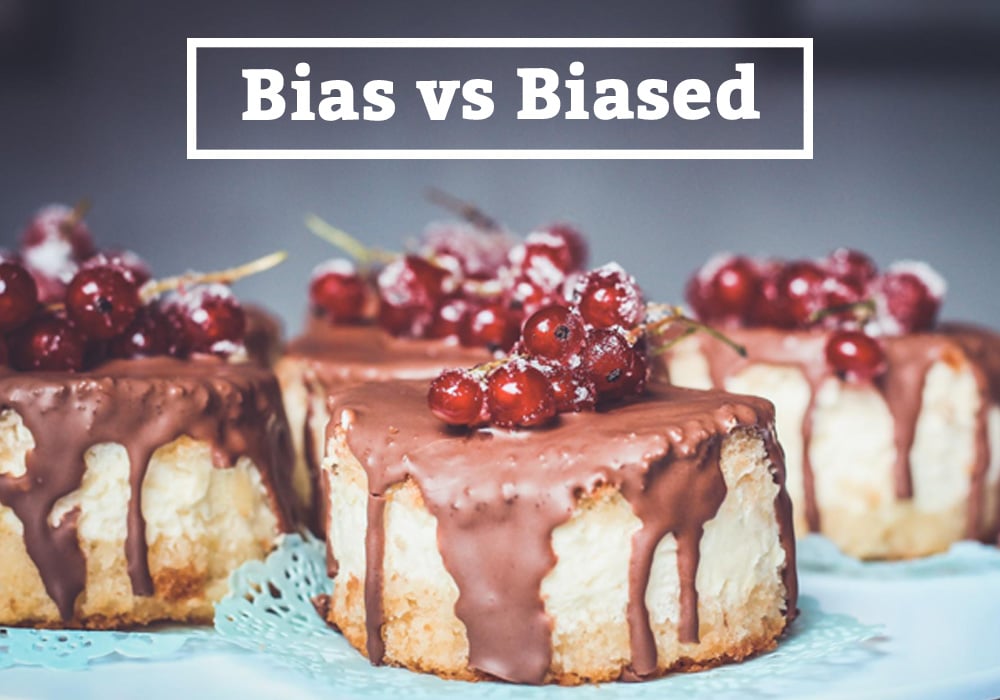
Each week here at the Australian Writers’ Centre, we dissect and discuss, contort and retort, ask and gasp at the English language and all its rules, regulations and ridiculousness. It’s a celebration of language, masquerading as a passive-aggressive whinge about words and weirdness. This week we’re biased towards cakes…
Q: Hi AWC, is that cake?
A: Yes, it was someone’s birthday in the office.
Q: Oh, I really love cake. Although my dad was a baker, so I guess I’m bias.
A: Sorry?
Q: Don’t be sorry. There’s good dough to be made as a baker.
A: Groan. But no, we’re asking about your earlier sentence.
Q: The judge said that wouldn’t appear on my record!
A: Oh dear. We mean the sentence you wrote five lines ago.
Q: Ah okay. What about it?
A: You told us that you were “bias”. This is not correct.
Q: Well, I suppose you’re right – after all, having a father as a baker shouldn’t disqualify you from liking cake. So I guess I’m not bias after all.
A: Alright, enough. The word you want is “biased” – NOT “bias”!
Q: Really?
A: Yes. It’s an increasingly common mistake that could perhaps be forgiven in speech (the two words can sound similar when said quickly) but not acceptable in written form.
Q: Oh. Tell me more.
A: So, it’s a very simple rule. One is the noun “bias” – what Macquarie Dictionary describes as “a particular tendency, inclination or prejudice”. You HAVE a bias. While “biased” is an adjective – having or showing an opinion based on personal prejudice. You ARE biased.
Q: Examples?
A: “Growing up around cakes has made you biased in your opinion of them. This bias is evident to anyone you speak to.” Or, “The survey was biased against working mums.”
Q: Can I assume that the survey was about childcare?
A: We just made that example up.
Q: Well, sounds like it’s biased against ALL mums then. Sheesh… sensitive subject much?
A: Um. Okay.
Q: So what about a “bias-cut” dress?
A: Well, that’s simply another meaning that relates closer to the origin of the word. “Bias comes from French, and Greek before that – meaning “oblique” or “diagonal”. So a bias-cut is a diagonal cut – named by fashion designer Madeleine Vionnet in 1927.
Q: Hmmm, but I’ve also heard bias/biased used as a verb.
A: Yes, that’s true. So an example of this would be “The candidate tried to bias the recruiter with her short dress”.
Q: Was it a bias-cut dress?
A: No.
Q: Is another example, “The leaked news report biased the entire jury”?
A: It sure is. Although for both examples, we’d argue that “influence/influenced” is a better word.
Q: Okay, so it seems fairly straightforward. You can bias something, and you can have bias. And if you’re biased, there’s a chance you may have biased someone in the past.
A: Yes, but most important – never describe yourself as “bias”. It’s always “biased”.
Q: Is that your unbiased opinion?
A: It sure is.
Q: Anything else to add?
A: Actually yes. If you’re biased TOWARDS something, you’re actually in favour of it. Often, what you really mean is that you’re biased AGAINST something or someone.
Q: Ohhh, that’s a tricky one.
A: Yes, it’s actually a common mistake – even for those who know the other rule.
Q: Quick side question – should we say “towards something” or “toward something”?
A: British English and Australian English tend to use “towards”, while American English prefers “toward”.
Q: Okay, good talk. Do you have any cake left?
A: All gone sorry.
Q: Well could you bias another one? Haha.
If you have a grammar gripe or punctuation puzzle that you’d like our Q&A to explore, email it to us today!

About us
Contact us